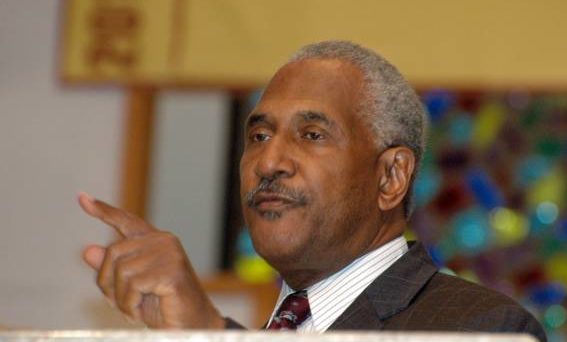NAACP Atlanta Chapter’s Invisible Hate Unveils Racist Truths Behind 700 U.S. Monuments
Invisible Hate unveils historical misinformation and use of taxpayer funding for
Confederate symbols still standing across America, empowers citizens
(Black PR Wire) The Atlanta chapter of the National Association for the Advancement of Colored People (NAACP) in partnership with 22Squared, an independent creative agency, today announced Invisible Hate, an interactive digital and social education experience aimed at exposing historical truths and contexts behind 700+ Confederate monuments and symbols across the United
States. The tool empowers Americans to identify and understand symbols of racism and
hate in their own cities while providing easy-to-access email templates that demand
local and regional legislators remove public symbols of hate.
How It Works
The web-based platform includes an interactive map that shows the locations of
Confederate monuments across the country. Using location-based technology, users
can opt into finding the closest symbol to them while receiving supplementary historical
information about it.
The platform also enables each user to seamlessly generate a customizable email to
their appropriate local government representative and make their opinions known,
including sharing activity on social media. If the user is physically in front of the
monument, they can take a photo and apply custom stickers to it, then share to social
media. If the user isn’t near a monument, they can select from a library of images and
place stickers over the image, also shareable via social media.
Please find a video detailing Invisible Hate here.
History of Invisible Hate
Confederate symbols across the U.S. have been effigies of hate with whitewashed
histories since the Civil War, yet many still standing are less than 100 years old. Beyond
statues, these symbols include homes, parks, fountains, museums, libraries and
cemeteries. While some monuments are privately maintained and funded, many
Confederate symbols and their upkeep, especially those located on government
property, are funded by tax dollars, sometimes even federal tax dollars. Over the past
decade, American taxpayers have unwittingly paid more than $40 million to Confederate
monuments and heritage organizations.
Invisible Hate was brought to life over a three-year period by a core collaborative team
between the local Atlanta chapter of the NAACP and other creative organizations based
on the chapter’s existing work towards the removal of Confederate monuments. The
collaboration team includes 22Squared, who created the foundation for the platform,
and MarketSmiths, an independent, third-party content writing and research agency,
who wrote and fact-checked many of the entries, as well as verified the platform’s
information. M ss ng P eces, an award-winning production company, built the launching
platform.
“Far too often, Americans have been complacent in accepting what’s been told about
our country’s roots instead of questioning their accuracy. These symbols are no
exception,” said Richard Rose, president of the NAACP Atlanta chapter. “Collectively,
citizens need to understand that hate symbols exist to normalize racism and that our
nation continues to perpetuate hate, violence and racism. Monuments are not history.
They are political statements. These statements have encouraged hate and division.
Invisible Hate is an educational instrument and its information provides a clearer picture
of our past in an effort to better our futures.”
As police brutality and racism protests continue today, these symbols continue to stand.
A few of the more obvious monuments have already been taken down, either by the
local governments themselves or by activist citizens and protest groups. Cities
nationwide are removing various symbols piece by piece; however, there are many
state and local laws protecting against the unlawful removal of Confederate
monuments.
“America is starting to confront its own historical ignorance on a mass scale but there’s
still quite a bit of education needed,” said 22Squared creative director Alex Lukacs and
one of Invisible Hate’s core team leads. “We believe that Invisible Hate can be the tool
to capitalize on the momentum the country is feeling by giving everyone the power to do
something about these symbols of hate and change today’s conversations.”
Reverend Robert W. Lee IV, the ancestor of Confederate general Robert E. Lee and
author of A Sin by Any Other Name: Reckoning With Racism and the Heritage of the
South, has condemned the ubiquity of these symbols, openly stating in an opinion
article in The Washington Post that he supports the removal of Robert E. Lee’s statues.
He lends his support of Invisible Hate
“I have spent years advocating for the removal of racist symbols of hate across this
country. I recognize the destructive power of a racist legacy all too well,” said Lee. “It’s
become necessary to have a movement and platform to efficiently identify and remove
these symbols from the public eye, especially if their true histories have been
overwritten by years of white supremacy and institutional racism. Invisible Hate will
provoke new conversations and policy change.”
To use or learn more about Invisible Hate, please visit www.invisiblehate.org. You can
also follow the social discussion via Instagram, Twitter and Facebook.
.


